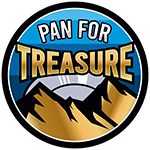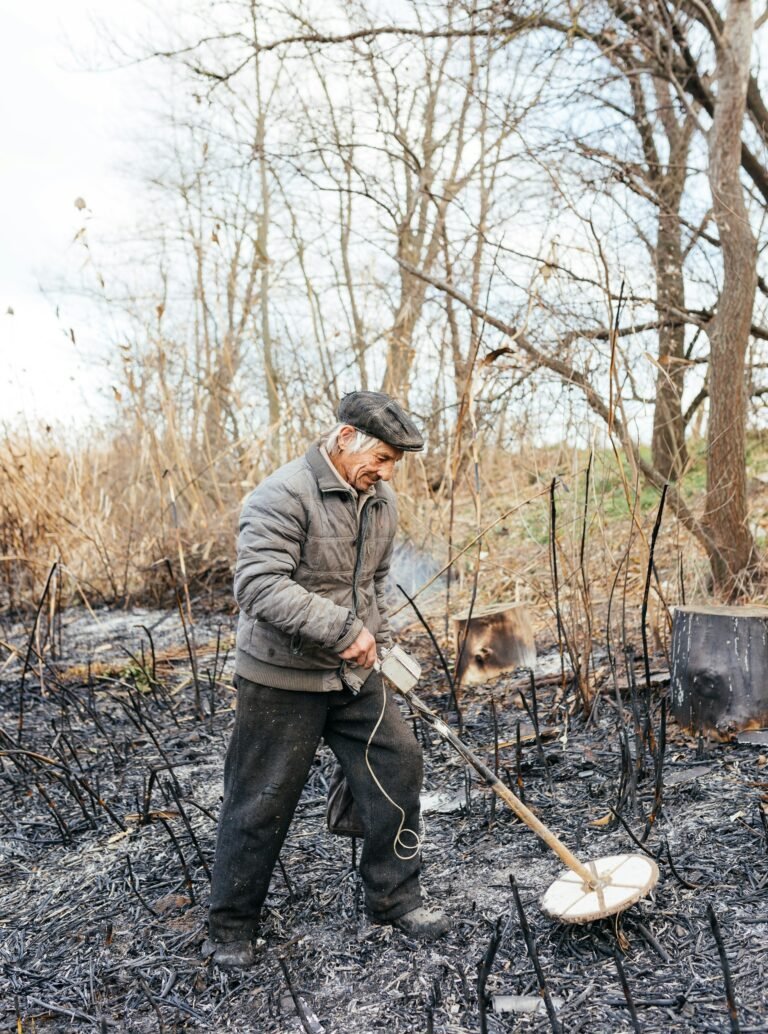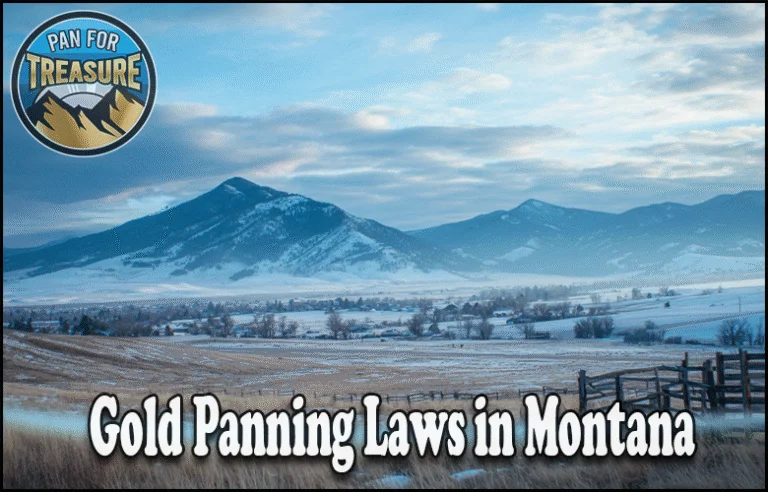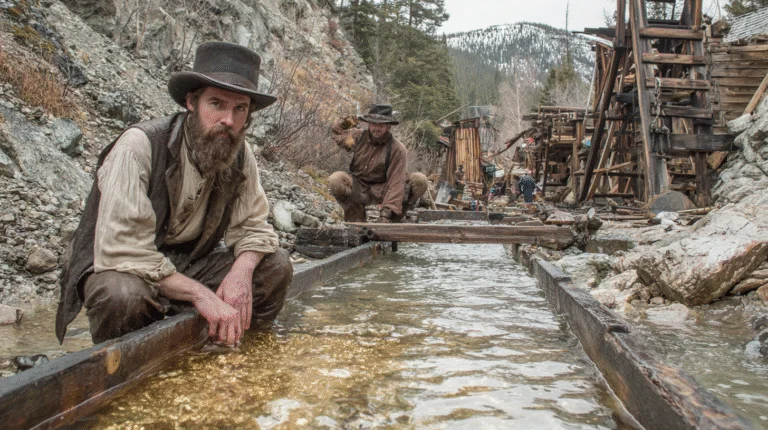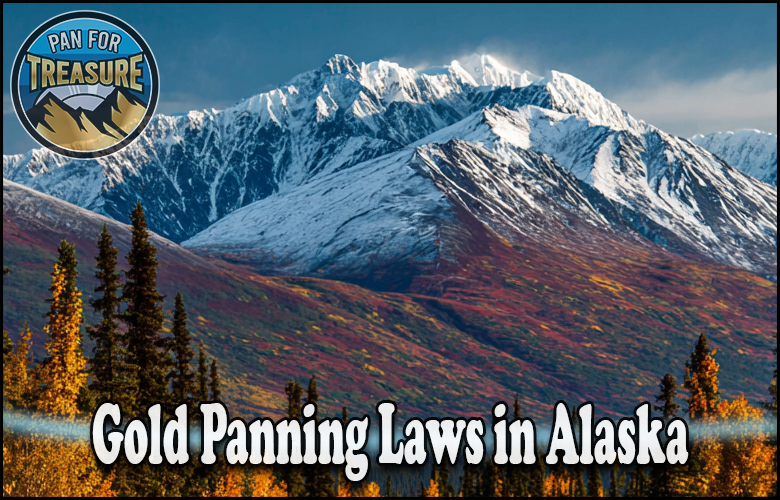
Disclosure: This Post Contains Affiliate Links; We earn a commission on purchases.
Gold Panning Laws in Alaska have their roots in the state’s rich history, dating back to the Klondike Gold Rush era.
This recreational activity continues to attract prospectors from around the globe, drawn to Alaska’s abundant rivers and streams in hopes of striking gold.
Before setting out on your adventure, it’s essential to familiarize yourself with the laws and regulations that govern gold panning in the Last Frontier.
Understanding these rules ensures that your activities are not only legal but also environmentally responsible and fully compliant with state guidelines.
Key Takeaways:
- Understanding gold panning regulations in Alaska is essential to ensure compliance with the law.
- Obtaining the necessary permits and following the legal requirements for gold panning is crucial.
- There are restrictions on certain areas where gold panning is allowed in Alaska, so it’s important to know the specific locations where prospecting is permitted.
- Prospectors should familiarize themselves with the legal framework and guidelines for gold panning to protect the environment and other recreational activities.
- Respecting claim owners and seeking permission before panning on their claims is a fundamental aspect of responsible gold panning.
Understanding Gold Panning Laws in Alaska
Alaska gold panning is a popular activity for both locals and visitors, offering a chance to experience the thrill of finding gold in the state’s pristine rivers and streams.
Recreational gold panning is allowed on many public lands, but it’s important to follow the Code of Federal Regulations to ensure compliance with the law.
Before you pan for gold, make sure you’re not on a mining claim, as these areas are privately owned and require permission to access.
Gold panning is allowed in designated areas, and recreational panning is typically limited to hand tools like pans and shovels to minimize environmental impact.
By understanding and respecting these guidelines, you can enjoy the excitement of gold panning while preserving Alaska’s natural beauty for future generations.
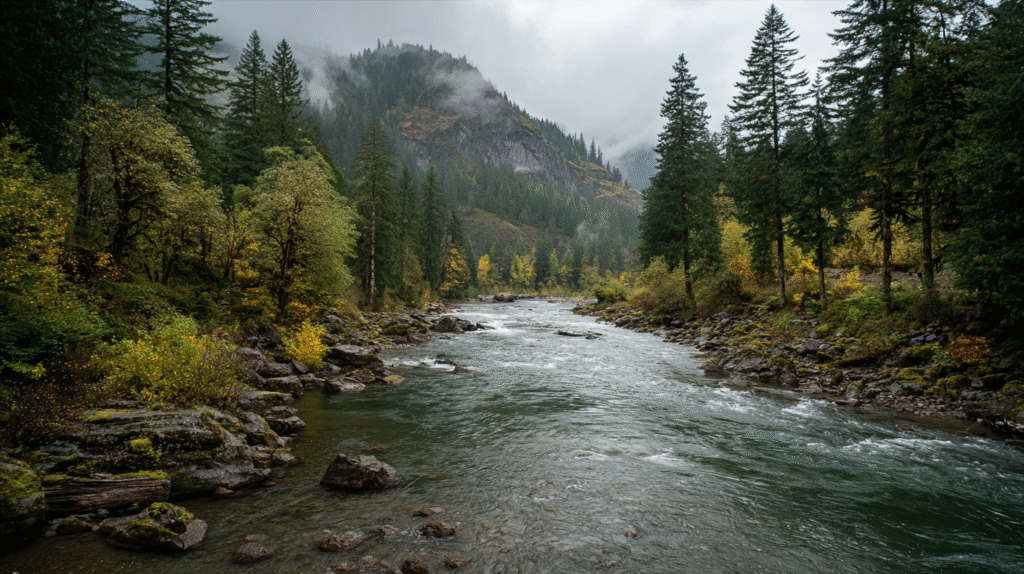
Current State of Recreational Gold Mining in Alaska
Recreational gold mining in Alaska is one of the most popular outdoor activities, captivating both tourists and locals.
The allure of striking it rich and experiencing the thrill of finding gold amidst the stunning Alaskan wilderness attracts adventurers from far and wide.
Whether individuals opt for guided tours or prefer to venture out on their own, there are numerous established mine sites across the state that cater to all types of gold panners.
However, it’s important to note that regulations for recreational mining have become more stringent in recent years due to environmental concerns.
The Alaskan government recognizes the significance of preserving the pristine natural habitats and water ecosystems.
To ensure the protection of water quality and aquatic life, restrictions on activities such as dredging have been implemented in specific areas.
Prior to engaging in any mining activities, individuals are required to obtain permits and conduct water quality testing.
These measures are in place to minimize the environmental impact and promote sustainable gold panning practices.
By adhering to these regulations, prospectors can enjoy their recreational mining activities while also preserving the delicate balance of Alaska’s ecosystem.
Despite these necessary restrictions, recreational gold mining remains a thriving industry in Alaska. The state’s rich mining history and abundant natural resources continue to attract enthusiasts who seek to connect with the past while delighting in the beauty of the wilderness.
It’s a unique opportunity to immerse oneself in the legacy of the Klondike Gold Rush and experience the rush of finding gold firsthand.
To truly appreciate the current state of recreational gold mining in Alaska, it’s important to understand the balance between enjoying this popular outdoor activity and preserving the environment for future generations.
By following the regulations, obtaining permits, and showing respect for the natural surroundings, gold panners can partake in this adventure while minimizing their impact on the ecosystem.
It’s an opportunity to make lasting memories and contribute to the continued legacy of gold panning in Alaska.
Related Gold Panning Information
Gold Panning Guidelines and Mining Laws
When engaging in gold panning activities in Alaska, it is essential to adhere to specific guidelines and laws to ensure a legal and environmentally responsible experience.
By following these regulations, prospectors can protect the natural environment and maintain the integrity of recreational activities.
It is important to familiarize oneself with the federal regulations, obtain the necessary permits, and understand the guidelines for using certain equipment.
Following National Forest Rules
When gold panning in Alaska, it is crucial to respect the guidelines set forth by the national forest authorities.
These rules aim to maintain the ecological balance, conserve natural resources, and protect the habitats of wildlife.
By adhering to these rules, prospectors contribute to the preservation of the state’s vast wilderness and ensure future generations can enjoy the natural splendor of Alaska.
Obtaining Permits
Prospectors planning to use suction dredges for gold panning must obtain the necessary permits from the appropriate governing bodies.
These permits allow individuals to use suction dredges while adhering to specific regulations designed to minimize environmental impact.
It is essential to familiarize oneself with the permit application process, requirements, and any associated fees to comply with the current laws and regulations.
Mining Plan Requirements for Hydraulic Mining
Hydraulic mining involves using high-pressure water jets to dislodge and collect sediments in search of gold.
To engage in hydraulic mining activities, prospectors must develop mining plans that outline their intentions, methods, and environmental mitigation measures.
These plans are evaluated to ensure compliance with federal regulations and to minimize any potential harm to the environment.
Working in Active Stream Channels
When gold panning in Alaska, it is essential to work only in active stream channels to minimize environmental disturbances.
Active stream channels are defined as areas where water regularly flows, ensuring minimal impact on the surrounding ecosystem and habitats.
Prospecting in active stream channels allows for the sustainable pursuit of gold while minimizing the disruption to the natural balance of Alaska’s rivers and streams.
Respecting Mining Claims and Seek Permission
Under the 1872 Mining Law, individuals can locate mining claims on federal land in Alaska.
However, it is vital to respect the rights of claim owners and seek permission before engaging in gold panning activities on their claims.
Respecting claim boundaries and obtaining permission ensures a mutually beneficial and harmonious experience for all prospectors while upholding the principles of responsible mining.
By adhering to these gold panning guidelines and mining laws, prospectors can enjoy the thrill of searching for gold while preserving the natural beauty of Alaska and protecting the state’s precious resources.
Gold Panning FAQs for Alaska
Is it legal to pan for gold in Alaska?
Yes, recreational gold panning is legal in Alaska. Much of the land is public, and panning is allowed on many federal and state lands, but always check for specific rules or land use designations.
Do I need a permit to pan for gold in Alaska?
Recreational panning usually does not require a permit in Alaska, especially when using non-motorized equipment on public land. However, permits may be required for larger-scale operations or on certain types of land.
Where can I legally pan for gold in Alaska?
You can pan for gold on Bureau of Land Management (BLM) land, state recreation areas, and designated public mining areas such as Crow Creek, Chicken Gold Camp, and the Petersville Recreational Mining Area. Always confirm that the land is not already claimed.
Is there gold in Alaska rivers and streams?
Yes, Alaska is rich in placer gold, and many rivers and streams throughout the state contain gold deposits. Popular gold-bearing areas include the Fortymile River, Nome, and the Fairbanks region.
What equipment is allowed for recreational gold panning in Alaska?
In most cases, only non-motorized tools such as pans, shovels, and sluice boxes are allowed for recreational use. Motorized equipment typically requires special permits and may be restricted in certain areas.
{
“@context”: “https://schema.org”,
“@type”: “FAQPage”,
“mainEntity”: [
{
“@type”: “Question”,
“name”: “Is it legal to pan for gold in Alaska?”,
“acceptedAnswer”: {
“@type”: “Answer”,
“text”: “Yes. Recreational gold panning is legal in Alaska. Much of the land is public, and panning is allowed on many federal and state lands, but always check for specific rules or land use designations.”
}
},
{
“@type”: “Question”,
“name”: “Do I need a permit to pan for gold in Alaska?”,
“acceptedAnswer”: {
“@type”: “Answer”,
“text”: “Recreational panning usually does not require a permit in Alaska, especially when using non-motorized equipment on public land. Permits may be required for larger-scale operations or on certain types of land.”
}
},
{
“@type”: “Question”,
“name”: “Where can I legally pan for gold in Alaska?”,
“acceptedAnswer”: {
“@type”: “Answer”,
“text”: “You can pan for gold on Bureau of Land Management (BLM) land, state recreation areas, and designated public mining areas such as Crow Creek, Chicken Gold Camp, and the Petersville Recreational Mining Area. Always confirm that the land is not already claimed.”
}
},
{
“@type”: “Question”,
“name”: “Is there gold in Alaska rivers and streams?”,
“acceptedAnswer”: {
“@type”: “Answer”,
“text”: “Yes. Alaska is rich in placer gold, and many rivers and streams contain gold deposits. Popular areas include the Fortymile River, Nome, and the Fairbanks region.”
}
},
{
“@type”: “Question”,
“name”: “What equipment is allowed for recreational gold panning in Alaska?”,
“acceptedAnswer”: {
“@type”: “Answer”,
“text”: “In most cases, only non-motorized tools such as pans, shovels, and sluice boxes are allowed for recreational use. Motorized equipment typically requires special permits and may be restricted in certain areas.”
}
}
]
}
Conclusion
Gold panning in Alaska is more than just a recreational activity-it’s a way to honor the state’s rich mining heritage.
With clear regulations in place, it’s essential for prospectors to understand the laws and guidelines that govern this cherished pastime.
Respecting the environment, obtaining permission from claim owners, and adhering to the rules help preserve Alaska’s pristine rivers and streams for future generations.
The thrill of discovering real gold amidst the stunning wilderness of Alaska creates an unforgettable connection to the Klondike Gold Rush era.
By staying informed and practicing responsible techniques, prospectors can enjoy this timeless activity while safeguarding the natural beauty of the Last Frontier.
Embracing the gold panning laws in Alaska ensures that this historic and exciting pursuit remains a sustainable adventure for years to come.
Source Links
- https://bizarrehobby.com/gold-panning-in-alaska/
- https://alaskatrekker.com/things/alaska-gold-panning/
- https://www.myalaskan.com/gold-panning-in-alaska/
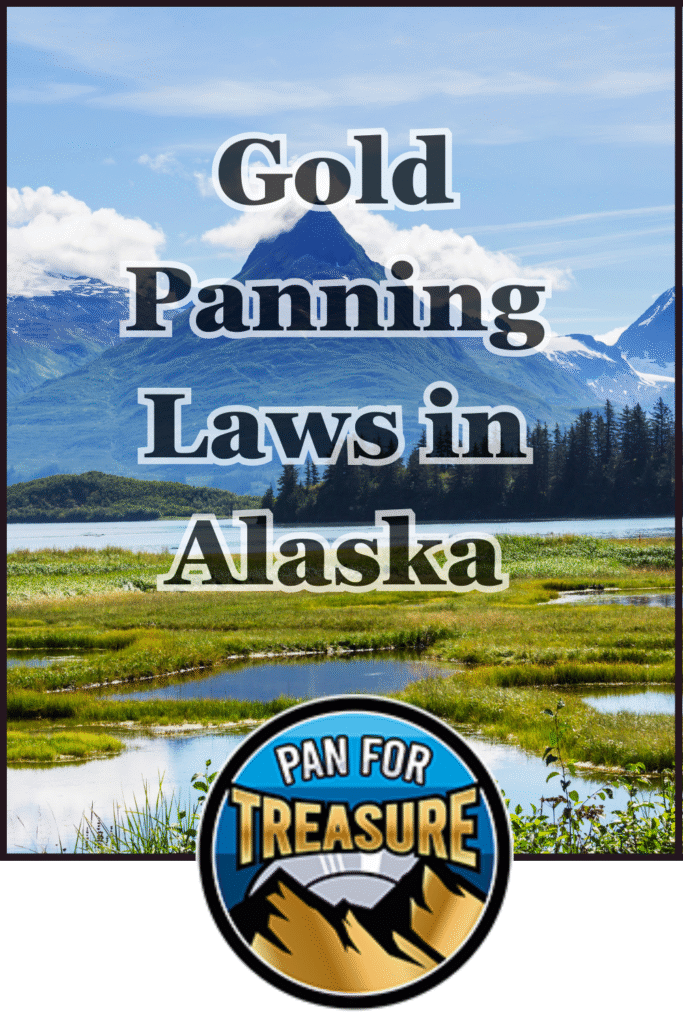

Meet Ryan Conlon, the passionate owner and driving force behind Pan for Treasure.
With an unwavering love for the art of gold panning, Ryan has transformed his enthusiasm into a thriving community hub for fellow treasure seekers. info@panfortreasure.com
A seasoned gold panning enthusiast, Ryan’s journey began with a simple pan and a dream, evolving into a deep appreciation for the history, geology, and thrill of uncovering precious metals.
Subscribe to Our Newsletter
